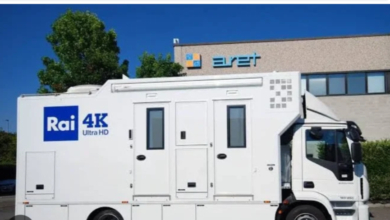The SEO Guide to Digital Asset Management

In the era of digital dominance, managing the myriad assets that fuel online content creation has become a strategic imperative for businesses across industries. Enter Digital Asset Management (DAM), a robust solution designed to streamline workflows, enhance collaboration, and optimize the use of digital resources. In this comprehensive SEO guide, we will delve into the intricacies of Digital Asset Management and explore its transformative impact on businesses aiming to conquer the digital landscape.
The Foundation of Digital Asset Management (DAM)
1. Defining Digital Asset Management:
Digital Asset Management, commonly known as DAM, is a centralized system that organizes, stores, and retrieves digital assets. These assets include images, videos, documents, creative files, and more. A DAM system acts as a repository, offering a structured and searchable database for efficient asset management.
2. The SEO Connection:
From an SEO perspective, the organization and accessibility of digital assets play a pivotal role in enhancing online visibility. Search engines prioritize user experience, and a well-organized DAM system ensures that relevant digital assets can be easily retrieved. This, in turn, contributes to a positive user experience, potentially boosting search engine rankings.
The SEO Benefits of Digital Asset Management
1. Improved Page Load Speed:
Search engines consider page load speed as a crucial ranking factor. Digital Asset Management optimizes image and video assets, ensuring they are appropriately compressed and resized for web use. This optimization not only enhances user experience but also contributes to faster page load times, a factor appreciated by search engine algorithms.
2. Enhanced User Engagement:
Engaging visuals are essential for capturing audience attention. DAM systems enable businesses to curate a library of compelling images and videos. When integrated into websites and other online platforms, these assets enhance user engagement, reducing bounce rates and signaling to search engines that the content is valuable and relevant.
3. Consistent Branding Across Channels:
Consistency in branding is vital for building trust and recognition. DAM ensures that all digital assets adhere to brand guidelines. This consistency extends across websites, social media, and other online channels, reinforcing the brand’s identity. Search engines value brand consistency as it contributes to a coherent online presence.
4. Optimized Metadata for Search:
Metadata, including titles, alt text, and descriptions, plays a significant role in SEO. DAM systems allow for the efficient management of metadata, ensuring that each digital asset is appropriately tagged and described. This optimization improves the visibility of assets in search engine results and enhances the overall discoverability of the content.
5. Efficient Content Collaboration:
Content collaboration is a key aspect of effective digital marketing. DAM facilitates seamless collaboration by providing a centralized platform for teams to work on creative projects. This collaborative environment leads to the creation of high-quality content, which, when shared online, contributes to improved search engine rankings.
Choosing the Right Digital Asset Management Solution
1. Scalability:
As your digital asset library grows, so should your DAM solution. A scalable DAM system accommodates the increasing volume of assets without compromising performance. This scalability is crucial for businesses experiencing growth in their digital footprint.
2. User-Friendly Interface:
A user-friendly interface is essential for widespread adoption of a DAM system within your organization. The easier it is for teams to navigate and utilize the DAM platform, the more likely they are to engage with it consistently, ensuring the optimal management of digital assets.
3. Integration Capabilities:
Seamless integration with other tools and platforms is a key consideration. A DAM system that integrates with content management systems, design software, and other essential tools ensures a smooth workflow and maximizes the efficiency of asset utilization.
4. Security Measures:
The security of digital assets is paramount. Choose a DAM solution with robust access controls, encryption, and backup features to protect sensitive information. This not only safeguards your assets but also instills confidence in search engines regarding the credibility of your digital content.
Digital Asset Management: A Future-Ready Approach
In conclusion, Digital Asset Management is not just a contemporary solution; it’s a future-ready approach to handling the complexities of digital content in a dynamic online landscape. From improving page load speed to enhancing user engagement and maintaining consistent branding, the SEO benefits of DAM are manifold. By selecting the right DAM solution and incorporating it seamlessly into your workflows, you position your business for optimal visibility and success in the digital realm. Embrace the efficiency and creativity unlocked by Digital Asset Management, and watch your online presence soar to new heights.



